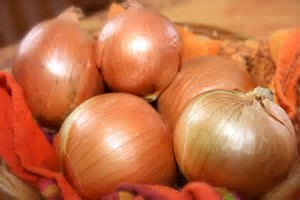How to Grow Onions
Do you know your onions? As one of our most used vegetables perhaps we should. They are a main ingredient in cooking throughout the world for sauces, soups, salads, stir fries and much more. The benefits of onions have long been known, with the workers who built the pyramids in Egypt, athletes from ancient Greece and Roman Gladiators all using onions to promote strength and performance. They are rich in vitamins and minerals, are easy to grow and have the added benefit of storing well over winter.
Where to grow:
They are best grown in an open sunny site with good drainage and do particularly well in raised beds. Avoid freshly manured ground as this can lead to rotting and you should avoid growing them on the same site every year.
How to grow:
The easiest way to grow your own onions is to plant as “sets” (baby onions). They are usually planted in early Spring, as soon as the soil is workable. Prepare the ground by weeding and raking and incorporating a general fertiliser such as Growmore then mark out rows about a foot apart (30cm). Push a single set into the soil along the row leaving only about 4″ (10cm) between them. The pointed end should be at the top and you should leave the tip just visible.
How to look after them:
After planting birds can sometimes be a nuisance and pull them out – just push them back in and they’ll soon root and become secure in the ground. If birds are a major problem cover the sets with fleece just until they get established. Keep the sets weed free; onions are shallow rooting so can struggle if they have to compete for moisture and food with strongly growing weeds. A short-handled onion hoe is the perfect tool for this.
Possible problems:
Onions are quite easy to grow and problems are few. Mildew can be a problem in wet summers, and you should pick off any affected leaves. Mildew will also reduce their storing qualities so you should eat them fresh.
Onion white rot can occur and is recognised by fluffy white growths. Any affected onions should be discarded and you should not grow onions, shallots or garlics on that same site for at least eight years. You should always plan your vegetable garden using crop rotation principles to avoid such problems.
Harvesting and storing:
Onions are ready to harvest when the leaves begin to turn yellow, usually in late summer. To speed on this process you can bend the leaves over to divert goodness into the onion. Use a garden fork to ease out the onions, shake off the excess soil and leave somewhere dry for the skins to cure for storing. During a hot dry summer this can be done outside on wire mesh above the ground to allow air circulation, but otherwise drying off in a greenhouse, polytunnel or sunny porch would work just as well.
Once the onions are dry gently knock off remaining soil and store in a net bag (or plait the dried leaves and hang them up) in a cool dry shed. They are ready for use, and if harvested and stored correctly will keep for the entire winter.
Shallots can also be grown in a similar way as onions and have a unique sharp yet sweet flavour perfect for salads and open tarts.
Recommended varieties are Sturon (which has an Award of Garden Merit), Stuttgarter Giant and Red Karmen, and a recommended shallot is Golden Gourmet.
Hopefully once you’ve tried growing youor own onions you’ll realise just how easy it is and may consider entering you onions in one of the local Horticultural Shows.

